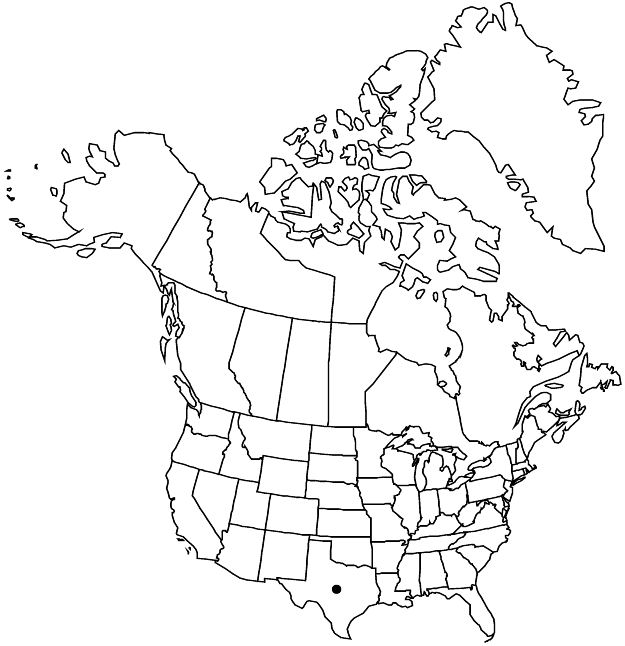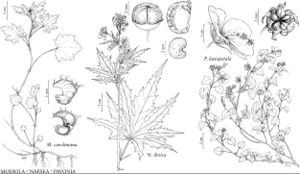Difference between revisions of "Pavonia lasiopetala"
Linnaea 21: 470. 1848.
imported>Volume Importer |
imported>Volume Importer |
||
| Line 55: | Line 55: | ||
|publication year=1848 | |publication year=1848 | ||
|special status=Illustrated | |special status=Illustrated | ||
| − | |source xml=https:// | + | |source xml=https://bitbucket.org/aafc-mbb/fna-data-curation/src/2e0870ddd59836b60bcf96646a41e87ea5a5943a/coarse_grained_fna_xml/V6/V6_557.xml |
|subfamily=Malvaceae subfam. Malvoideae | |subfamily=Malvaceae subfam. Malvoideae | ||
|genus=Pavonia | |genus=Pavonia | ||
Latest revision as of 23:22, 5 November 2020
Shrubs, 0.5–1 m. Stems densely to sparsely stellate-hairy, hairs to 0.5 mm. Leaves: stipules subulate, 2–5 mm; petiole 1/2–1 times length of blade; blade slightly discolorous, ovate, 2–5 cm, slightly longer than wide, base cordate, margins coarsely dentate, apex acute, surfaces stellate-hairy. Inflorescences axillary solitary flowers. Pedicels 2–5 cm, usually subequal to petiole; involucellar bractlets 5, alternate with calyx lobes, usually linear-lanceolate, 1–2 mm wide, shorter than to subequal to calyx, hirsute. Flowers: calyx 9–12 mm, hirsute, lobes prominently 3–5-veined; corolla rotate, petals lavender to pink, not auriculate, 15–25 mm; staminal column usually declinate resulting in somewhat bilateral flower, with 5 apical teeth, glabrous; stigmas included, usually villous. Schizocarps pallid, 8–9 mm diam., subglabrous; mericarps pale brown, without spines, obscurely carinate dorsally, otherwise smoothly rounded, 3.5–4 mm. Seeds tufted on hilum.
Phenology: Flowering summer–fall.
Habitat: Open shrublands
Elevation: 500–1000 m
Distribution

Tex., Mexico (Coahuila, Nuevo León).
Discussion
Pavonia lasiopetala has become a popular cultivated plant in Texas, where it is also native. It is also used as a component in seed mixtures for ranges and pastures.
Selected References
None.
